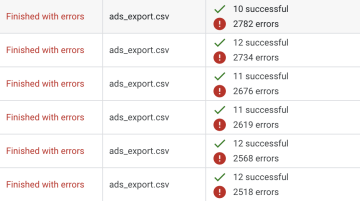
August 29, 2024
Enhanced conversions for leads: Matching on email vs matching on GCLID
Are you using offline conversion imports? Are you enhancing your marketing data with user-provided information, or planning to? If so, Google's recent update will make your life easier: Conversions can now be matched using hashed email addresses in addition to GCLID.
What is enhanced conversion matching?
As user privacy requirements have increased, marketers have faced challenges in successfully connecting users who saw their ads with those who completed conversions. Enhanced conversions are part of the solution to regain that valuable data—with user consent, of course.
Enhanced conversion data can be applied in two ways. If your conversions happen entirely online, you can use enhanced conversions for web. If your conversions occur offline, require data processing through your backend, or don’t need to be utilized in near real-time, you can use enhanced conversions for leads.
Matching is the process of sending user-provided data (and optionally glicd), together with the conversion. Google Ads will then process the data and compare the user-provided data (email and phone). If there is a match with the internal Google database, this will attribute the purchase to a user they have more information about.
Why is GCLID now optional?
GCLID matching was the original method for tracking conversions. It addressed the problem of losing the Google Ads identifier after a session when a purchase was completed. GCLID is still used and compared against the database, just like user-provided data. However, in cases where the conversion window is longer, GCLID can become less reliable.
Nowadays, the preferred identifier is email. While phone numbers can also be used, email carries the most weight in matching. For enhanced conversions, you can confidently upload user-provided data, even if you don’t have a GCLID. Email is now the primary column for enhanced conversion.
How secure is the use of this data?
Enhanced conversions only work with hashed data. The hashing process follows industry standards, such as SHA256 encryption. For enhanced conversions for web, this data is typically pushed to the data layer for the conversion event and can be hashed before being sent. If not, the data is hashed by Google at the endpoint. For scheduled uploads in Enhanced Conversions for Leads, the data should be pre-hashed.
What are the results?
The results you see from enhanced conversions will vary based on your specific tracking setup. Not every conversion journey can achieve 100% matching, as the quality of the matching depends on various factors.
That being said, here are the results we saw after introducing enhanced conversion matching for one of our clients: These results are based on GCLID matching. Since the second set of results includes fewer rows, the important metric to focus on is the percentage of matches: approximately 0.4%.

How does the situation change when we introduce matching to email?
The results get closer to an ideal match. Email-based matching significantly improves the accuracy of conversion tracking.

Keep in mind that this optimization was done using the optimal setup our client already had in place. Your results may vary depending on how you collect user-provided information and measure conversions.
If you want to learn more about this topic, feel free to reach out to your favourite online measurement company. ❤️
Unleash the power*
of marketing data to sell optimally
Get in touch
Interested to find out the real potential* of your data?
Drop us your contact details and we will
get back to you shortly.


